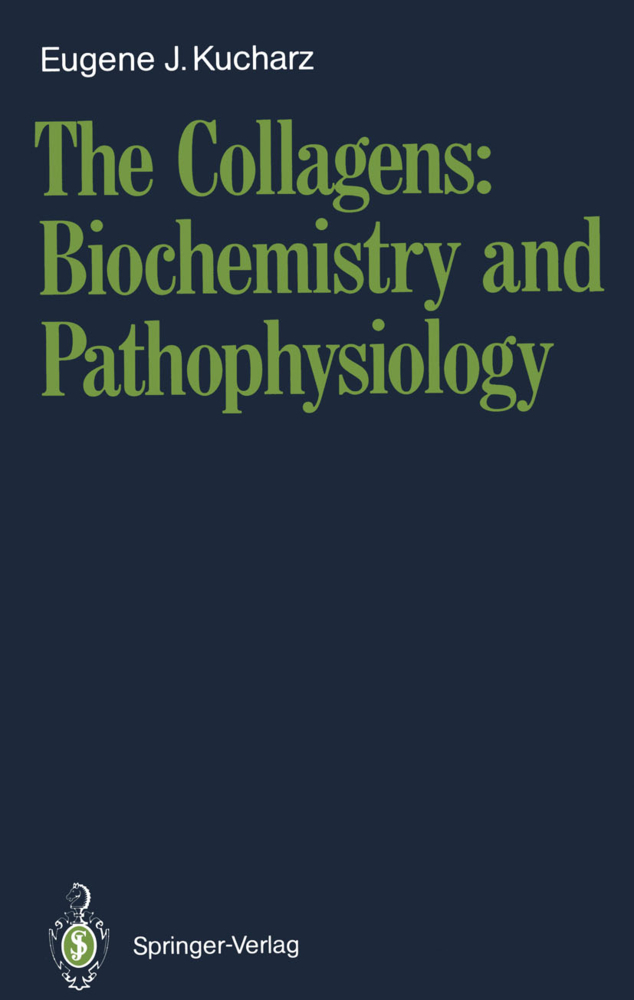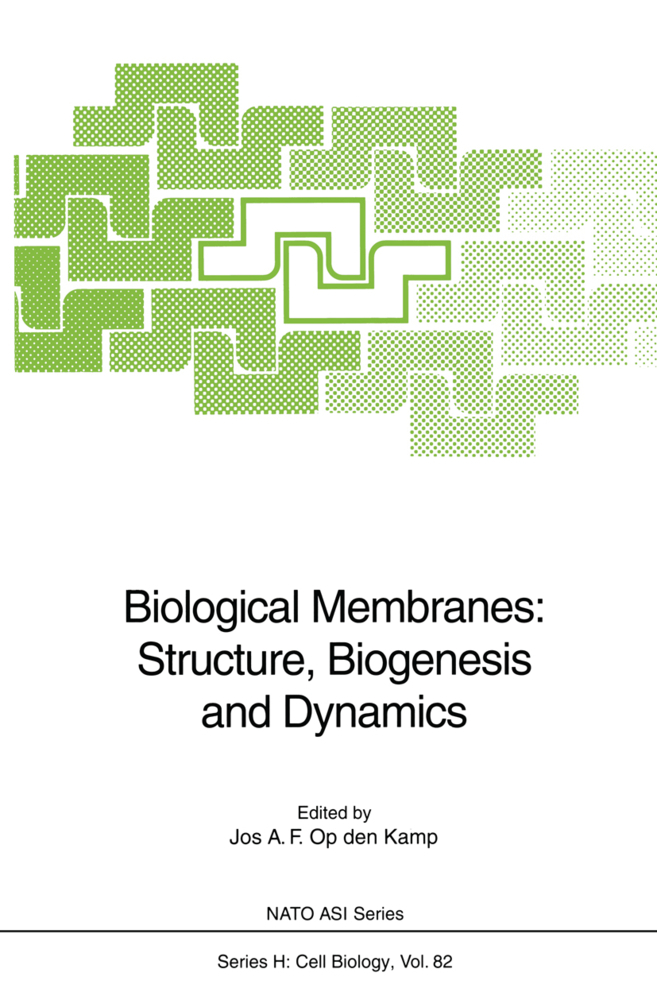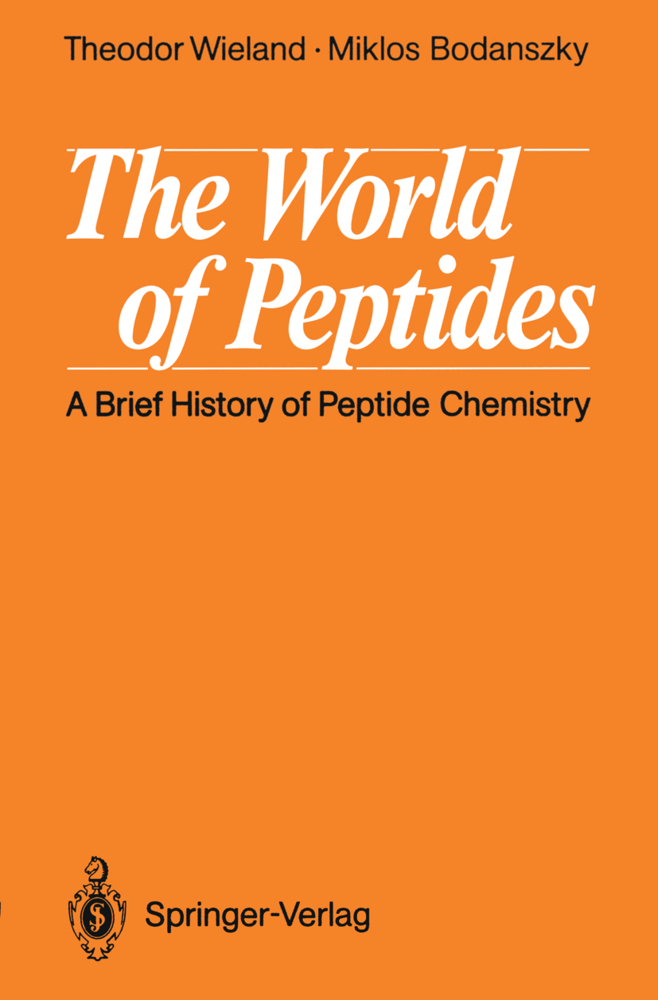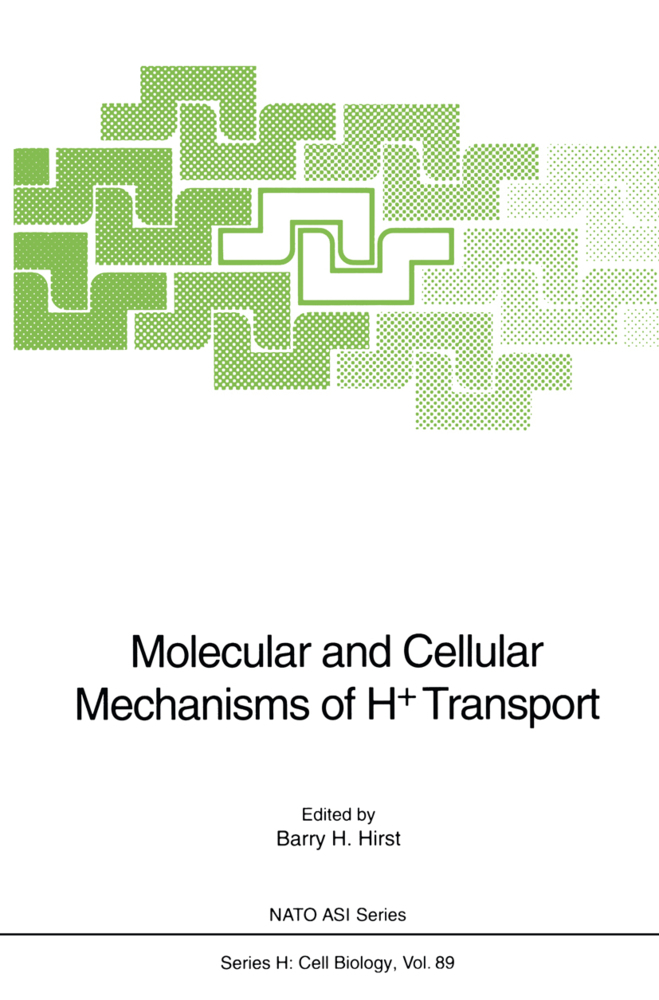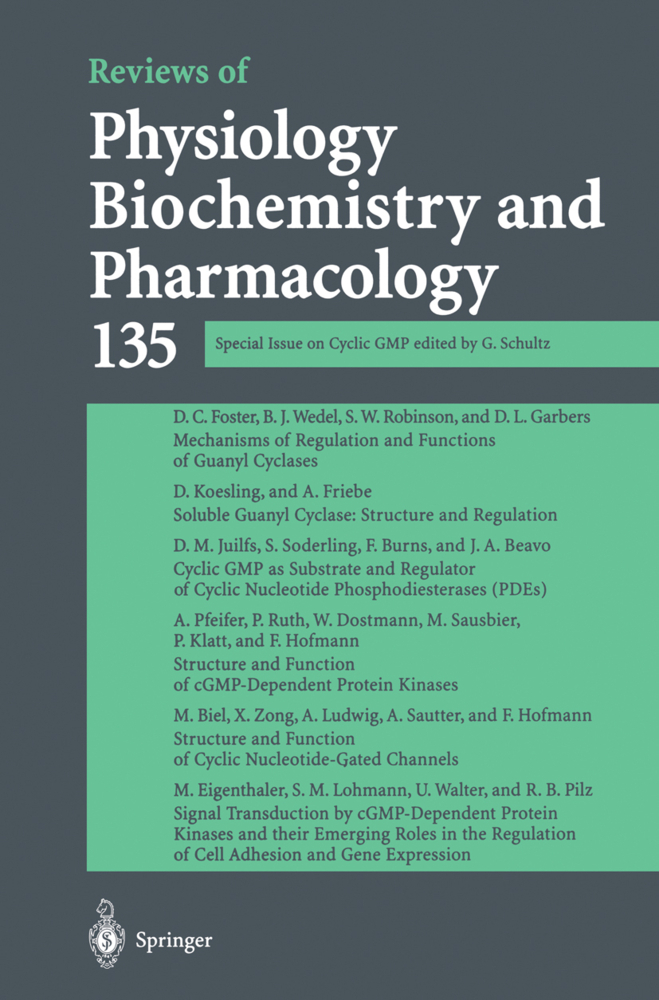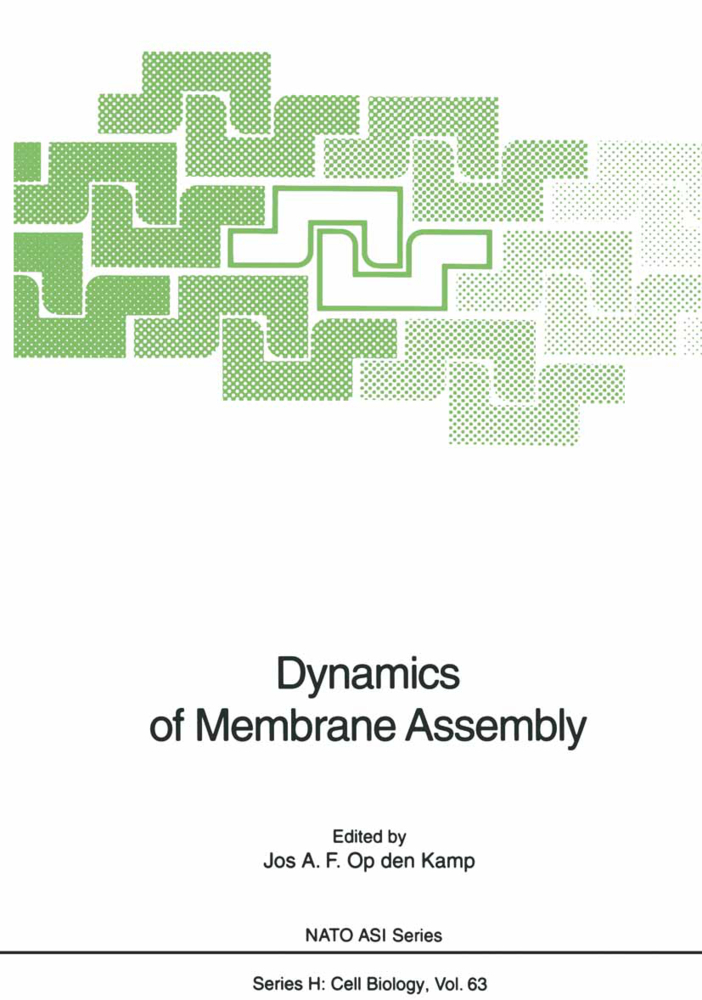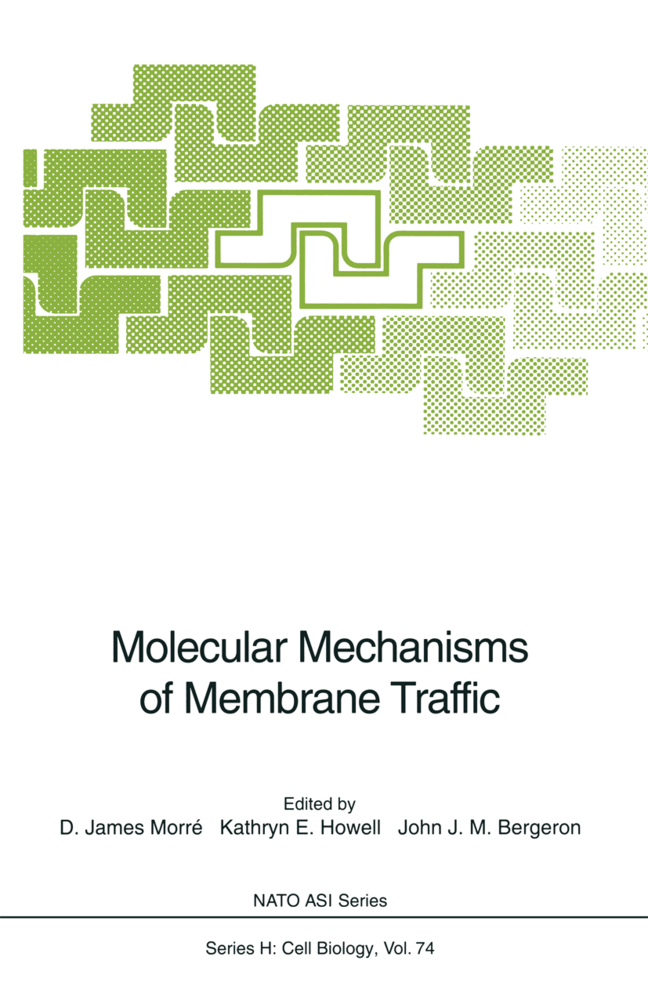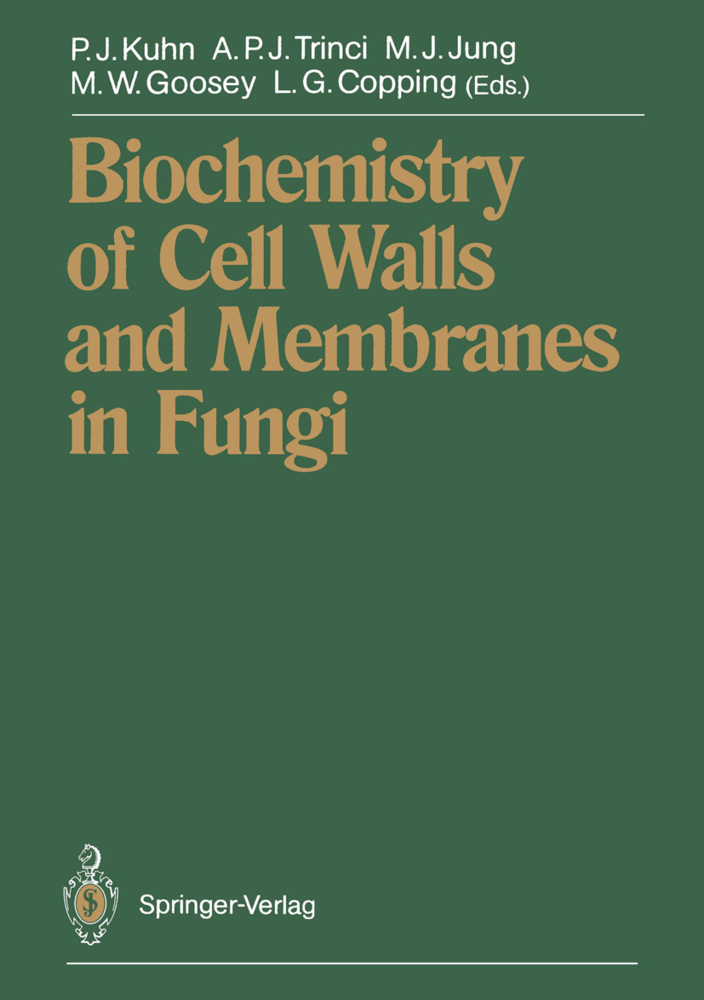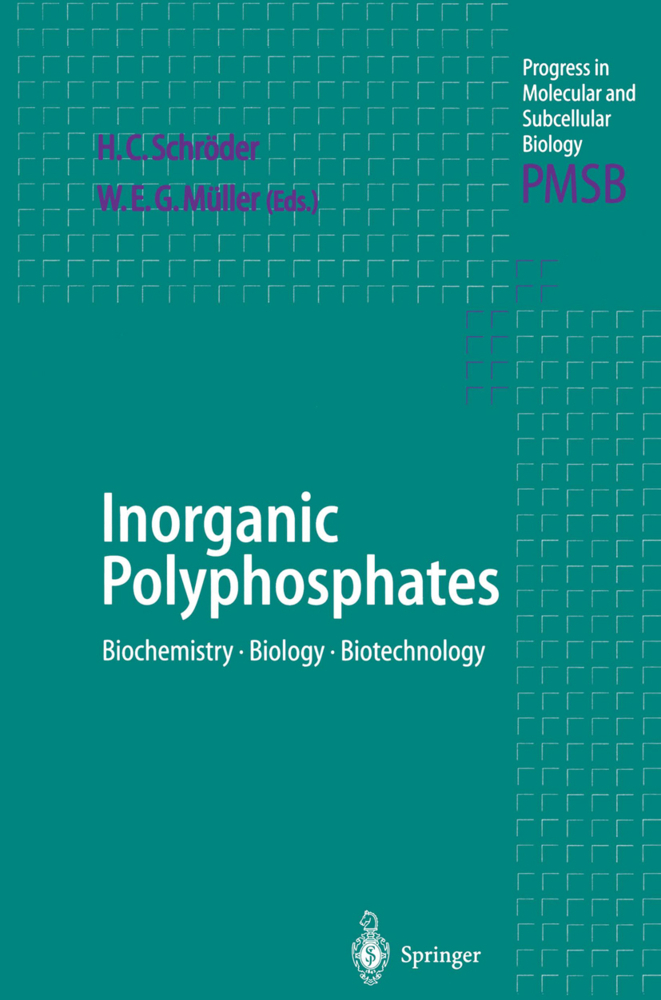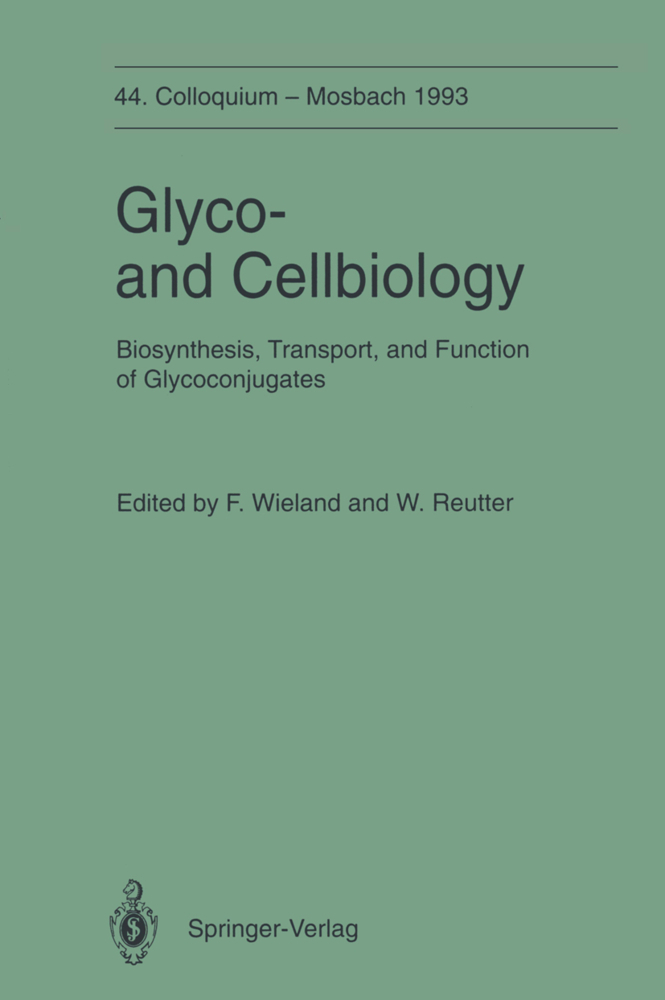The Collagens: Biochemistry and Pathophysiology
The Collagens: Biochemistry and Pathophysiology
Quam magnijicata sunt opera tua, Domine! Omnia in sapientia feciti, plena est terra creaturis tuis. Psalm us CIV:XXIV. The days when the answer to the questions "What is collagen and what is it for?" was simple and short are gone. Nowadays, collagen cannot be considered as a single and metabolic inert fibrous protein responsible only for some mechanical proper ties of tissues. The family of collagen proteins increases rapidly, and new collagens are still being discovered. They differ each from the other, and only the basic amino acid sequence con taining proline and hydroxyproline is the one constant and unique feature of proteins which are very different in all other aspects. This heterogeneity is related to the variety of their bio logical functions. The list of physiological aspects involving collagens as well as the number of disorders associated with collagen abnormalities are expanding rapidly. The structure and function of almost every organ are in some way related to connective tissue and to collagens in particular. Our knowledge in this field is significantly growing but is still far from com plete. The efforts to modify collagen gene expression, structure, and metabolism in order to manage some disorders are a new goal of pharmacology and are a natural sequel of the progress ing understanding of the pathophysiological role of collagens. This book provides a comprehensive overview of the patho physiological aspects of collagens with special emphasis on medical problems, i. e.
2.1 Basic Nomenclature
2.2 Triple-Chain Helical Structure
2.3 Distribution
2.4 Classification and General Structural Features of the Collagens
2.5 Type I, Type II, Type III Collagens, and Type I-Trimer Collagen
2.6 Type IV Collagen
2.7 Type V Collagen
2.8 Type VI Collagen
2.9 Type VII Collagen
2.10 Type VIII Collagen
2.11 Type IX Collagen
2.12 Type X Collagen
2.13 Type XI Collagen
2.14 Type XII Collagen
2.15 Type XIII Collagen
2.16 Proteins Containing a Collagenlike Sequence
2.16.1 Acetylcholinesterase
2.16.2 Mammalian Lectins
2.16.2.1 Complement Component C1q
2.16.2.2 Conglutinin
2.16.2.3 Mannan-Binding Protein
2.16.2.4 Lung Surfactant Protein
3 Biosynthesis of Collagen
3.1 Introduction
3.2 Procollagen Genes
3.3 Cleavage of the Signal Peptide
3.4 Hydroxylation of Proline and Lysine Residues
3.5 Glycosylation of Hydroxylysine Residues
3.6 Glycosylation of Asparagine Residues
3.7 Chain Association, Disulfide Bonding, and Formation of the Helical Structure
3.8 Conversion of Procollagen to Collagen
3.9 Formation of the Supramolecular Structures
3.10 Cross-Linking of Collagen
3.11 Interaction of Collagen with Components of the Extracellular Matrix
3.11.1 General Remarks
3.11.2 Collagen-Proteoglycan Interactions
3.11.3 Structural Glycoproteins
3.11.3.1 Fibronectin
3.11.3.2 Laminin
3.11.3.3 Entactin and Nitogen
3.11.3.4 Chondrionectin
3.11.3.5 Fibromodulin
4 Degradation
4.1 Introduction
4.2 General Pathways of Collagen Degradation
4.3 Depolymerization
4.4 Tissue Collagenases
4.5 Collagenolytic Cathepsins
4.6 Gelatinases and Collagen Peptidase
4.7 Collagenolytic Enzymes of Microbial Origin
5 Turnover and Regulation of Collagen Metabolism
5.1 Introduction
5.2 Transcriptional and Translational Control of Collagen Synthesis
5.3 Regulation of Collagen Synthesis at the Intracellular Posttranslational Level
5.4 Intracellular Degradation of Procollagen
5.5 Feedback Inhibition of Biosynthesis of Collagen by Aminoterminal Propeptides
5.6 Role of the Free Proline Pool in the Regulation of Collagen Synthesis
5.7 Turnover of Collagen
6 Collagen in Development, Aging, and Phylogeny
6.1 Collagen and Development
6.2 Collagen and Aging
6.3 Phylogenetic Aspects of Collagen
6.3.1 Collagen and Animal Phylogeny
6.3.2 Plants and Unicellular Organisms
6.3.3 Porifera
6.3.4 Coelenterata
6.3.5 Platyhelmintha
6.3.6 Aschelminthes
6.3.7 Annelida
6.3.8 Arthropoda
6.3.9 Mollusca
6.3.10 Echinodermata
6.3.11 Chordata
7 Hormonal Regulation of Collagen Metabolism
7.1 Introduction
7.2 Thyroxine, Triiodothyronine, and Thyrotropic Hormone
7.3 Glucocorticoids
7.4 Growth Hormone
7.5 Insulin and Glucagon
7.6 Prolactin
7.7 Histamine
8 Immunobiology of Collagen
8.1 Introduction
8.2 Antigenicity of Collagen and Procollagen
8.3 Immune Response to Collagens and Procollagens
8.4 Effect of Cytokines on Collagen Metabolism
9 Hereditary Disorders of Collagen
9.1 Introduction
9.2 The Ehlers-Danlos Syndrome
9.3 The Marfan Syndrome
9.4 Osteogenesis Imperfecta
9.4.1 Osteogenesis Imperfecta Type I
9.4.2 Osteogenesis Imperfecta Type II
9.4.3 Osteogenesis Imperfecta Type III
9.4.4 Osteogenesis Imperfecta Type IV
9.5 Epidermolysis Bullosa
9.6 Chondrodysplasias
9.7 Congenital Dislocation of the Hip
9.8 The Nail-Patella Syndrome
9.9 Hereditary Progressive Glomerulopathy (Alport's Syndrome)
9.10 Homocystinuria
9.11Alkaptonuria
9.12 Aspartylglycosaminuria
9.13 Familial Cutaneous Collagenoma
9.14 Focal Dermal Hypoplasia
9.15 Hyalinosis Cutis et Mucosae
9.16 Fibrodysplasia Ossificans Progressiva
9.17 Hereditary Disorders of Collagen Metabolism in Animals
10 Collagen Diseases
10.1 Introduction
10.2 Scleroderma and Related Conditions
10.3 Other Collagen Diseases
10.4 Drug-Induced Lupus-Like Syndrome
11 Musculoskeletal System
11.1 Introduction
11.2 Bone
11.2.1 Structure and Function
11.2.2 Collagen in Bone
11.2.3 Collagen in Pathology of Bone
11.2.3.1 Disturbed Regulation of Calcium and Phosphorus Metabolism
11.2.3.2 Osteoporosis
11.2.3.3 Paget's Disease
11.3 Cartilage
11.3.1 Structure and Function
11.3.2 Collagens of the Cartilage
11.4 Intervertebral Disc
11.4.1 Structure and Function
11.4.2 Collagen in the Intervertebral Disc
11.4.3 Collagen in Pathology of the Intervertebral Disc
11.4.3.1 Age-Related Degeneration
11.4.3.2 Chemonucleolysis
11.4.3.3 Scoliosis
11.5 Tendons and Related Structures
11.5.1 Structure and Function
11.5.2 Collagen in Tendinous Pathology
11.5.2.1 Dupuytren's Contracture
11.5.2.2 Carpal Tunnel Syndrome
11.6 Joints
11.6.1 Role of Collagen in the Structure and Function
11.7 Skeletal Muscle
11.7.1 Role of Collagen in the Structure and Function
11.7.2 Collagen in the Pathology
11.8 Collagen in Rheumatic Disorders
11.8.1 Rheumatoid Arthritis
11.8.2 Osteoarthrosis
11.8.3 Animal Models of Rheumatic Disorders
12 Cardiovascular System
12.1 Introduction
12.2 The Heart
12.2.1 General Structural Features
12.2.2 Collagen in the Normal Heart Muscle
12.2.3 Collagen in Myocardial Hypertrophy
12.2.4 Collagen in Myocardial Infarction
12.2.5 Collagen in the Valves inHealth and Disease
12.3 Vessels
12.3.1 General Characteristics
12.3.2 Collagen in the Normal Vessel Wall
12.3.3 Atherosclerosis
12.3.4 Hypertension
13 Respiratory System
13.1 General Structural Features
13.2 Collagen Content in the Lungs
13.3 Cells Involved in Collagen Production
13.4 Collagen and Lung Disease
13.4.1 Introduction
13.4.2 Fibrotic Lung Disorders
13.4.3 Destructive Lung Disorders
14 The Liver
14.1 Introduction
14.2 Collagen Content in the Liver
14.3 Collagen Synthesizing Cells
14.4 Fibrosis as a Response of the Liver Bioecosystem
14.5 Collagen Content in the Fibrotic Liver
14.6 Metabolism of Collagen in the Liver
14.7 Regulation of Collagen Metabolism and Development of Fibrosis
14.8 Collagen in Liver Regeneration
14.9 Collagen Metabolism in Diseases of the Bile Ducts
14.10 Indices of Collagen Metabolism in Hepatic Disorders
15 The Teeth and Periodontal Tissues
15.1 Structure and Collagen Content in Normal Teeth
15.1.1 Dentin
15.1.2 Cementum
15.1.3 Enamel
15.1.4 Dental Pulp
15.1.5 Periodontium
15.2 The Role of Collagen in Development of Teeth
15.3 Collagen and Dental and Periodontal Pathology
15.3.1 Periodontal Disease
15.3.2 Hydantoin-Induced Gingival Hyperplasia
16 The Skin and Wound Healing
16.1 Collagen in the Skin
16.2 Collagen in Cutaneous Diseases
16.3 Collagen in Keloids
16.4 Wound Healing
17 The Eye and The Ear
17.1 The Eye
17.1.1 General Structural Features
17.1.2 The Cornea and the Sclera
17.1.3 The Uvea
17.1.4 The Lens
17.1.5 The Vitreous Body
17.1.6 The Retina
17.1.7 Collagen in Ocular Pathology
17.2 The Ear
18 Urinary and Reproductive Systems
18.1 Introduction
18.2 The Urinary System
18.3 The Ovary
18.4 The Uterus and Pregnancy
18.5 Placenta
19 Collagen in the Nervous System
20 Collagen in Hematology
20.1 Collagen and Hematostasis
20.2 Collagen in the Bone Marrow
20.3 Collagen in the Lymph Nodes
21 Collagen and Neoplasia
21.1 Introduction
21.2 Collagen in the Stroma of Neoplasms
21.3 Collagenolysis and Tumor Invasion
22 Effect of Nutrition
22.1 Malnutrition and Overnutrition
22.2 Scurvy
23 Effect of Ionizing Radiation
24 Pharmacological Control of Collagen Metabolism
24.1 Introduction
24.2 Direct Inhibitors of Collagen Synthesis
24.2.1 Pharmacological Control of Hydroxylation of Proline and Lysine Residues
24.2.1.1 Structural Analogues of Proline
24.2.1.2 Cosubstrates and Cofactors of Hydroxylation
24.2.1.3 Fibrostatins
24.2.2 Pharmacological Control of Collagen Secretion
24.2.3 Pharmacological Control of the Conversion of Procollagen to Collagen
24.2.4 Pharmacological Control of Extracellular Processing of Collagen
24.2.4.1 Lathyrism
24.2.4.2 Penicillamine
24 2 4 3 Inhibitors of Lysyl Oxidase with Respect to Pyridoxal
24.2.5 Antifibroblast Serum
24.3 Pharmacological Control of Collagen Degradation
24.3.1 Induction of Collagenolysis
24.3.2 Inhibitors of Collagenase Secretion
24.3.3 Inhibitors of Mammalian Collagenases
24.4 Drugs That Indirectly Affect Collagen Metabolism
24.4.1 Nonsteroidal Antiinflammatory Drugs
24.4.2 Tissue Extracts
24.4.3 Heavy Metals
24.4.4 Fluoride
24.4.5 Cytostatic Drugs
24.4.6 Immunomodulants
24.4.7 Antibiotics
25 Indices of Collagen Metabolism in Clinical Practice
References.
1 Introduction: Historical Outline
2 Structure, Heterogeneity, and Distribution2.1 Basic Nomenclature
2.2 Triple-Chain Helical Structure
2.3 Distribution
2.4 Classification and General Structural Features of the Collagens
2.5 Type I, Type II, Type III Collagens, and Type I-Trimer Collagen
2.6 Type IV Collagen
2.7 Type V Collagen
2.8 Type VI Collagen
2.9 Type VII Collagen
2.10 Type VIII Collagen
2.11 Type IX Collagen
2.12 Type X Collagen
2.13 Type XI Collagen
2.14 Type XII Collagen
2.15 Type XIII Collagen
2.16 Proteins Containing a Collagenlike Sequence
2.16.1 Acetylcholinesterase
2.16.2 Mammalian Lectins
2.16.2.1 Complement Component C1q
2.16.2.2 Conglutinin
2.16.2.3 Mannan-Binding Protein
2.16.2.4 Lung Surfactant Protein
3 Biosynthesis of Collagen
3.1 Introduction
3.2 Procollagen Genes
3.3 Cleavage of the Signal Peptide
3.4 Hydroxylation of Proline and Lysine Residues
3.5 Glycosylation of Hydroxylysine Residues
3.6 Glycosylation of Asparagine Residues
3.7 Chain Association, Disulfide Bonding, and Formation of the Helical Structure
3.8 Conversion of Procollagen to Collagen
3.9 Formation of the Supramolecular Structures
3.10 Cross-Linking of Collagen
3.11 Interaction of Collagen with Components of the Extracellular Matrix
3.11.1 General Remarks
3.11.2 Collagen-Proteoglycan Interactions
3.11.3 Structural Glycoproteins
3.11.3.1 Fibronectin
3.11.3.2 Laminin
3.11.3.3 Entactin and Nitogen
3.11.3.4 Chondrionectin
3.11.3.5 Fibromodulin
4 Degradation
4.1 Introduction
4.2 General Pathways of Collagen Degradation
4.3 Depolymerization
4.4 Tissue Collagenases
4.5 Collagenolytic Cathepsins
4.6 Gelatinases and Collagen Peptidase
4.7 Collagenolytic Enzymes of Microbial Origin
5 Turnover and Regulation of Collagen Metabolism
5.1 Introduction
5.2 Transcriptional and Translational Control of Collagen Synthesis
5.3 Regulation of Collagen Synthesis at the Intracellular Posttranslational Level
5.4 Intracellular Degradation of Procollagen
5.5 Feedback Inhibition of Biosynthesis of Collagen by Aminoterminal Propeptides
5.6 Role of the Free Proline Pool in the Regulation of Collagen Synthesis
5.7 Turnover of Collagen
6 Collagen in Development, Aging, and Phylogeny
6.1 Collagen and Development
6.2 Collagen and Aging
6.3 Phylogenetic Aspects of Collagen
6.3.1 Collagen and Animal Phylogeny
6.3.2 Plants and Unicellular Organisms
6.3.3 Porifera
6.3.4 Coelenterata
6.3.5 Platyhelmintha
6.3.6 Aschelminthes
6.3.7 Annelida
6.3.8 Arthropoda
6.3.9 Mollusca
6.3.10 Echinodermata
6.3.11 Chordata
7 Hormonal Regulation of Collagen Metabolism
7.1 Introduction
7.2 Thyroxine, Triiodothyronine, and Thyrotropic Hormone
7.3 Glucocorticoids
7.4 Growth Hormone
7.5 Insulin and Glucagon
7.6 Prolactin
7.7 Histamine
8 Immunobiology of Collagen
8.1 Introduction
8.2 Antigenicity of Collagen and Procollagen
8.3 Immune Response to Collagens and Procollagens
8.4 Effect of Cytokines on Collagen Metabolism
9 Hereditary Disorders of Collagen
9.1 Introduction
9.2 The Ehlers-Danlos Syndrome
9.3 The Marfan Syndrome
9.4 Osteogenesis Imperfecta
9.4.1 Osteogenesis Imperfecta Type I
9.4.2 Osteogenesis Imperfecta Type II
9.4.3 Osteogenesis Imperfecta Type III
9.4.4 Osteogenesis Imperfecta Type IV
9.5 Epidermolysis Bullosa
9.6 Chondrodysplasias
9.7 Congenital Dislocation of the Hip
9.8 The Nail-Patella Syndrome
9.9 Hereditary Progressive Glomerulopathy (Alport's Syndrome)
9.10 Homocystinuria
9.11Alkaptonuria
9.12 Aspartylglycosaminuria
9.13 Familial Cutaneous Collagenoma
9.14 Focal Dermal Hypoplasia
9.15 Hyalinosis Cutis et Mucosae
9.16 Fibrodysplasia Ossificans Progressiva
9.17 Hereditary Disorders of Collagen Metabolism in Animals
10 Collagen Diseases
10.1 Introduction
10.2 Scleroderma and Related Conditions
10.3 Other Collagen Diseases
10.4 Drug-Induced Lupus-Like Syndrome
11 Musculoskeletal System
11.1 Introduction
11.2 Bone
11.2.1 Structure and Function
11.2.2 Collagen in Bone
11.2.3 Collagen in Pathology of Bone
11.2.3.1 Disturbed Regulation of Calcium and Phosphorus Metabolism
11.2.3.2 Osteoporosis
11.2.3.3 Paget's Disease
11.3 Cartilage
11.3.1 Structure and Function
11.3.2 Collagens of the Cartilage
11.4 Intervertebral Disc
11.4.1 Structure and Function
11.4.2 Collagen in the Intervertebral Disc
11.4.3 Collagen in Pathology of the Intervertebral Disc
11.4.3.1 Age-Related Degeneration
11.4.3.2 Chemonucleolysis
11.4.3.3 Scoliosis
11.5 Tendons and Related Structures
11.5.1 Structure and Function
11.5.2 Collagen in Tendinous Pathology
11.5.2.1 Dupuytren's Contracture
11.5.2.2 Carpal Tunnel Syndrome
11.6 Joints
11.6.1 Role of Collagen in the Structure and Function
11.7 Skeletal Muscle
11.7.1 Role of Collagen in the Structure and Function
11.7.2 Collagen in the Pathology
11.8 Collagen in Rheumatic Disorders
11.8.1 Rheumatoid Arthritis
11.8.2 Osteoarthrosis
11.8.3 Animal Models of Rheumatic Disorders
12 Cardiovascular System
12.1 Introduction
12.2 The Heart
12.2.1 General Structural Features
12.2.2 Collagen in the Normal Heart Muscle
12.2.3 Collagen in Myocardial Hypertrophy
12.2.4 Collagen in Myocardial Infarction
12.2.5 Collagen in the Valves inHealth and Disease
12.3 Vessels
12.3.1 General Characteristics
12.3.2 Collagen in the Normal Vessel Wall
12.3.3 Atherosclerosis
12.3.4 Hypertension
13 Respiratory System
13.1 General Structural Features
13.2 Collagen Content in the Lungs
13.3 Cells Involved in Collagen Production
13.4 Collagen and Lung Disease
13.4.1 Introduction
13.4.2 Fibrotic Lung Disorders
13.4.3 Destructive Lung Disorders
14 The Liver
14.1 Introduction
14.2 Collagen Content in the Liver
14.3 Collagen Synthesizing Cells
14.4 Fibrosis as a Response of the Liver Bioecosystem
14.5 Collagen Content in the Fibrotic Liver
14.6 Metabolism of Collagen in the Liver
14.7 Regulation of Collagen Metabolism and Development of Fibrosis
14.8 Collagen in Liver Regeneration
14.9 Collagen Metabolism in Diseases of the Bile Ducts
14.10 Indices of Collagen Metabolism in Hepatic Disorders
15 The Teeth and Periodontal Tissues
15.1 Structure and Collagen Content in Normal Teeth
15.1.1 Dentin
15.1.2 Cementum
15.1.3 Enamel
15.1.4 Dental Pulp
15.1.5 Periodontium
15.2 The Role of Collagen in Development of Teeth
15.3 Collagen and Dental and Periodontal Pathology
15.3.1 Periodontal Disease
15.3.2 Hydantoin-Induced Gingival Hyperplasia
16 The Skin and Wound Healing
16.1 Collagen in the Skin
16.2 Collagen in Cutaneous Diseases
16.3 Collagen in Keloids
16.4 Wound Healing
17 The Eye and The Ear
17.1 The Eye
17.1.1 General Structural Features
17.1.2 The Cornea and the Sclera
17.1.3 The Uvea
17.1.4 The Lens
17.1.5 The Vitreous Body
17.1.6 The Retina
17.1.7 Collagen in Ocular Pathology
17.2 The Ear
18 Urinary and Reproductive Systems
18.1 Introduction
18.2 The Urinary System
18.3 The Ovary
18.4 The Uterus and Pregnancy
18.5 Placenta
19 Collagen in the Nervous System
20 Collagen in Hematology
20.1 Collagen and Hematostasis
20.2 Collagen in the Bone Marrow
20.3 Collagen in the Lymph Nodes
21 Collagen and Neoplasia
21.1 Introduction
21.2 Collagen in the Stroma of Neoplasms
21.3 Collagenolysis and Tumor Invasion
22 Effect of Nutrition
22.1 Malnutrition and Overnutrition
22.2 Scurvy
23 Effect of Ionizing Radiation
24 Pharmacological Control of Collagen Metabolism
24.1 Introduction
24.2 Direct Inhibitors of Collagen Synthesis
24.2.1 Pharmacological Control of Hydroxylation of Proline and Lysine Residues
24.2.1.1 Structural Analogues of Proline
24.2.1.2 Cosubstrates and Cofactors of Hydroxylation
24.2.1.3 Fibrostatins
24.2.2 Pharmacological Control of Collagen Secretion
24.2.3 Pharmacological Control of the Conversion of Procollagen to Collagen
24.2.4 Pharmacological Control of Extracellular Processing of Collagen
24.2.4.1 Lathyrism
24.2.4.2 Penicillamine
24 2 4 3 Inhibitors of Lysyl Oxidase with Respect to Pyridoxal
24.2.5 Antifibroblast Serum
24.3 Pharmacological Control of Collagen Degradation
24.3.1 Induction of Collagenolysis
24.3.2 Inhibitors of Collagenase Secretion
24.3.3 Inhibitors of Mammalian Collagenases
24.4 Drugs That Indirectly Affect Collagen Metabolism
24.4.1 Nonsteroidal Antiinflammatory Drugs
24.4.2 Tissue Extracts
24.4.3 Heavy Metals
24.4.4 Fluoride
24.4.5 Cytostatic Drugs
24.4.6 Immunomodulants
24.4.7 Antibiotics
25 Indices of Collagen Metabolism in Clinical Practice
References.
Kucharz, Eugene J.
| ISBN | 978-3-642-76199-7 |
|---|---|
| Artikelnummer | 9783642761997 |
| Medientyp | Buch |
| Auflage | Softcover reprint of the original 1st ed. 1992 |
| Copyrightjahr | 2012 |
| Verlag | Springer, Berlin |
| Umfang | XVIII, 430 Seiten |
| Abbildungen | XVIII, 430 p. |
| Sprache | Englisch |

